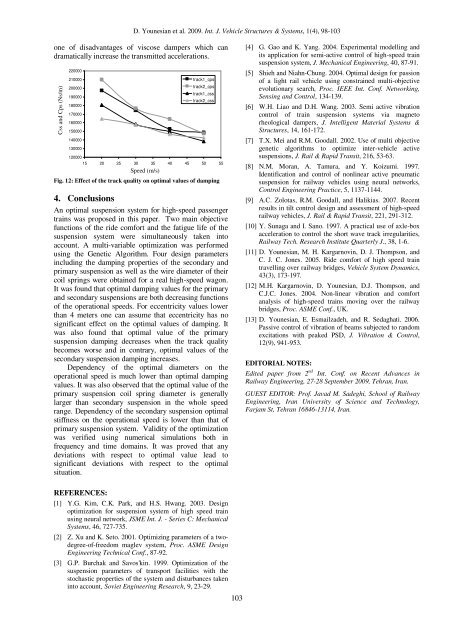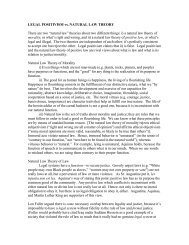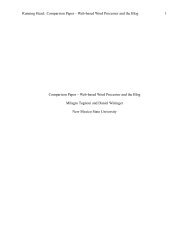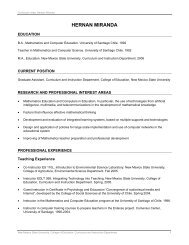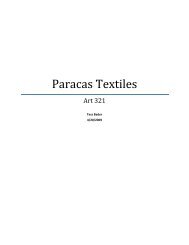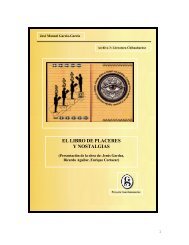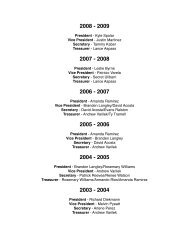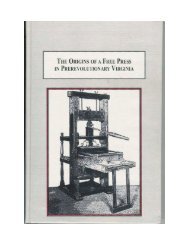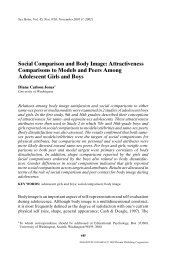Spectral Optimization of the Suspension System of High-speed Trains
Spectral Optimization of the Suspension System of High-speed Trains
Spectral Optimization of the Suspension System of High-speed Trains
You also want an ePaper? Increase the reach of your titles
YUMPU automatically turns print PDFs into web optimized ePapers that Google loves.
D. Younesian et al. 2009. Int. J. Vehicle Structures & <strong>System</strong>s, 1(4), 98-103<br />
one <strong>of</strong> disadvantages <strong>of</strong> viscose dampers which can<br />
dramatically increase <strong>the</strong> transmitted accelerations.<br />
Css and Cps (Ns/m)<br />
220000<br />
210000<br />
200000<br />
190000<br />
180000<br />
170000<br />
160000<br />
150000<br />
140000<br />
130000<br />
track1_cps<br />
track2_cps<br />
track1_css<br />
track2_css<br />
120000<br />
15 20 25 30 35 40 45 50 55<br />
Speed (m/s)<br />
Fig. 12: Effect <strong>of</strong> <strong>the</strong> track quality on optimal values <strong>of</strong> damping<br />
4. Conclusions<br />
An optimal suspension system for high-<strong>speed</strong> passenger<br />
trains was proposed in this paper. Two main objective<br />
functions <strong>of</strong> <strong>the</strong> ride comfort and <strong>the</strong> fatigue life <strong>of</strong> <strong>the</strong><br />
suspension system were simultaneously taken into<br />
account. A multi-variable optimization was performed<br />
using <strong>the</strong> Genetic Algorithm. Four design parameters<br />
including <strong>the</strong> damping properties <strong>of</strong> <strong>the</strong> secondary and<br />
primary suspension as well as <strong>the</strong> wire diameter <strong>of</strong> <strong>the</strong>ir<br />
coil springs were obtained for a real high-<strong>speed</strong> wagon.<br />
It was found that optimal damping values for <strong>the</strong> primary<br />
and secondary suspensions are both decreasing functions<br />
<strong>of</strong> <strong>the</strong> operational <strong>speed</strong>s. For eccentricity values lower<br />
than 4 meters one can assume that eccentricity has no<br />
significant effect on <strong>the</strong> optimal values <strong>of</strong> damping. It<br />
was also found that optimal value <strong>of</strong> <strong>the</strong> primary<br />
suspension damping decreases when <strong>the</strong> track quality<br />
becomes worse and in contrary, optimal values <strong>of</strong> <strong>the</strong><br />
secondary suspension damping increases.<br />
Dependency <strong>of</strong> <strong>the</strong> optimal diameters on <strong>the</strong><br />
operational <strong>speed</strong> is much lower than optimal damping<br />
values. It was also observed that <strong>the</strong> optimal value <strong>of</strong> <strong>the</strong><br />
primary suspension coil spring diameter is generally<br />
larger than secondary suspension in <strong>the</strong> whole <strong>speed</strong><br />
range. Dependency <strong>of</strong> <strong>the</strong> secondary suspension optimal<br />
stiffness on <strong>the</strong> operational <strong>speed</strong> is lower than that <strong>of</strong><br />
primary suspension system. Validity <strong>of</strong> <strong>the</strong> optimization<br />
was verified using numerical simulations both in<br />
frequency and time domains. It was proved that any<br />
deviations with respect to optimal value lead to<br />
significant deviations with respect to <strong>the</strong> optimal<br />
situation.<br />
REFERENCES:<br />
[1] Y.G. Kim, C.K. Park, and H.S. Hwang. 2003. Design<br />
optimization for suspension system <strong>of</strong> high <strong>speed</strong> train<br />
using neural network, JSME Int. J. - Series C: Mechanical<br />
<strong>System</strong>s, 46, 727-735.<br />
[2] Z. Xu and K. Seto. 2001. Optimizing parameters <strong>of</strong> a twodegree-<strong>of</strong>-freedom<br />
maglev system, Proc. ASME Design<br />
Engineering Technical Conf., 87-92.<br />
[3] G.P. Burchak and Savos'kin. 1999. <strong>Optimization</strong> <strong>of</strong> <strong>the</strong><br />
suspension parameters <strong>of</strong> transport facilities with <strong>the</strong><br />
stochastic properties <strong>of</strong> <strong>the</strong> system and disturbances taken<br />
into account, Soviet Engineering Research, 9, 23-29.<br />
103<br />
[4] G. Gao and K. Yang. 2004. Experimental modelling and<br />
its application for semi-active control <strong>of</strong> high-<strong>speed</strong> train<br />
suspension system, J. Mechanical Engineering, 40, 87-91.<br />
[5] Shieh and Niahn-Chung. 2004. Optimal design for passion<br />
<strong>of</strong> a light rail vehicle using constrained multi-objective<br />
evolutionary search, Proc. IEEE Int. Conf. Networking,<br />
Sensing and Control, 134-139.<br />
[6] W.H. Liao and D.H. Wang. 2003. Semi active vibration<br />
control <strong>of</strong> train suspension systems via magneto<br />
rheological dampers, J. Intelligent Material <strong>System</strong>s &<br />
Structures, 14, 161-172.<br />
[7] T.X. Mei and R.M. Goodall. 2002. Use <strong>of</strong> multi objective<br />
genetic algorithms to optimize inter-vehicle active<br />
suspensions, J. Rail & Rapid Transit, 216, 53-63.<br />
[8] N.M. Moran, A. Tamura, and Y. Koizumi. 1997.<br />
Identification and control <strong>of</strong> nonlinear active pneumatic<br />
suspension for railway vehicles using neural networks,<br />
Control Engineering Practice, 5, 1137-1144.<br />
[9] A.C. Zolotas, R.M. Goodall, and Halikias. 2007. Recent<br />
results in tilt control design and assessment <strong>of</strong> high-<strong>speed</strong><br />
railway vehicles, J. Rail & Rapid Transit, 221, 291-312.<br />
[10] Y. Sunaga and I. Sano. 1997. A practical use <strong>of</strong> axle-box<br />
acceleration to control <strong>the</strong> short wave track irregularities,<br />
Railway Tech. Research Institute Quarterly J., 38, 1-6.<br />
[11] D. Younesian, M. H. Kargarnovin, D. J. Thompson, and<br />
C. J. C. Jones. 2005. Ride comfort <strong>of</strong> high <strong>speed</strong> train<br />
travelling over railway bridges, Vehicle <strong>System</strong> Dynamics,<br />
43(3), 173-197.<br />
[12] M.H. Kargarnovin, D. Younesian, D.J. Thompson, and<br />
C.J.C. Jones. 2004. Non-linear vibration and comfort<br />
analysis <strong>of</strong> high-<strong>speed</strong> trains moving over <strong>the</strong> railway<br />
bridges, Proc. ASME Conf., UK.<br />
[13] D. Younesian, E. Esmailzadeh, and R. Sedaghati. 2006.<br />
Passive control <strong>of</strong> vibration <strong>of</strong> beams subjected to random<br />
excitations with peaked PSD, J. Vibration & Control,<br />
12(9), 941-953.<br />
EDITORIAL NOTES:<br />
Edited paper from 2 nd Int. Conf. on Recent Advances in<br />
Railway Engineering, 27-28 September 2009, Tehran, Iran.<br />
GUEST EDITOR: Pr<strong>of</strong>. Javad M. Sadeghi, School <strong>of</strong> Railway<br />
Engineering, Iran University <strong>of</strong> Science and Technology,<br />
Farjam St, Tehran 16846-13114, Iran.


